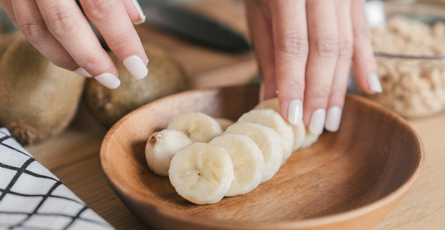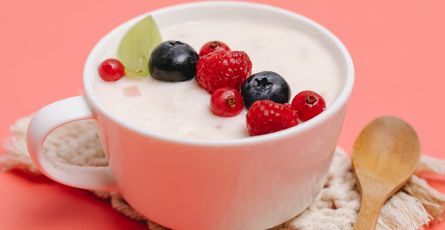Butter is High in Protein: These Are The Top Options to Consider
-
 Sofia Cruz
Sofia Cruz
- 6 July 2023

For those looking to increase their protein intake, nut and seed butters can be a great addition to their diet. But not all butters are created equal when it comes to protein content. Some contain higher amounts of protein than others, making them a better choice for those looking to boost their protein intake.
When it comes to nut butters, peanut butter is the clear winner in terms of protein content. With 8 grams of protein per ounce, it’s a great option for those looking to pack more protein into their diet. Almond butter and cashew butter are also good choices, with 6 and 5 grams of protein per ounce, respectively.
Seed butters are another great option for those looking to increase their protein intake. Sunflower seed butter and watermelon seed butter are both high in protein, with 6 and 8 grams of protein per ounce, respectively. So whether you prefer nut or seed butters, there are plenty of options available to help you meet your protein needs.
What is Protein Butter?
Protein butter is a type of nut or seed butter that is high in protein. It’s believed that protein butter can help with muscle recovery, weight loss, and overall health due to its high protein content.
Protein butter is made by blending nuts or seeds into a smooth or crunchy spread. Some popular types of protein butter include peanut butter, almond butter, cashew butter, and sunflower seed butter. These butters can be used as a spread on toast, added to smoothies, or used as a dip for fruits and vegetables.
Protein butter is a great source of protein, healthy fats, and fiber. It’s also a good source of vitamins and minerals such as vitamin E, magnesium, and potassium. However, it’s important to note that protein butter is also high in calories and fat, so it should be consumed in moderation as part of a balanced diet.
If you’re looking to add more protein to your diet, protein butter can be a great addition. Just be sure to read the labels and choose a butter that is low in added sugars and preservatives. You can also make your own protein butter at home by blending nuts or seeds in a food processor until smooth.
Why Choose High-Protein Butter?
Butter is a staple ingredient in many kitchens, but did you know that some types of butter are higher in protein than others? Choosing a high-protein butter can be beneficial for those looking to increase their protein intake. Here are a few reasons why:
- Protein is essential for building and repairing muscles, making it an important nutrient for athletes and fitness enthusiasts.
- Protein can help keep you feeling full and satisfied, which can be helpful for weight management.
- Protein is important for overall health and can help support immune function and hormone production.
When it comes to choosing a high-protein butter, there are several options available:
| Butter Type | Protein Content (per 2 tbsp serving) |
|---|---|
| Peanut Butter | 8g |
| Almond Butter | 6g |
| Cashew Butter | 5.8g |
As you can see, peanut butter is the highest in protein, followed by almond and cashew butter. However, it’s important to note that these types of butter are also high in fat and calories, so it’s important to consume them in moderation.
If you’re looking for a butter with even more protein, you may want to consider a protein butter, which is a type of nut butter that has been fortified with additional protein. These types of butters can contain up to 10g of protein per serving.
Overall, choosing a high-protein butter can be a simple and delicious way to increase your protein intake and support your overall health and wellness.
Different Types of High-Protein Butter
When it comes to high-protein butters, there are several options available. Here are some of the most popular types:
Peanut Butter
Peanut butter is a popular choice for those looking for a high-protein spread. It contains around 7-8 grams of protein per serving, making it a great option for a post-workout snack. It’s also rich in healthy fats and fiber, which can help keep you feeling full and satisfied.
Almond Butter
Almond butter is another great option for those looking for a high-protein spread. It contains around 6-7 grams of protein per serving, as well as healthy fats and fiber. It’s also a good source of vitamin E, which is important for skin health.
Cashew Butter
Cashew butter is a delicious and creamy spread that’s also high in protein. It contains around 5-6 grams of protein per serving, as well as healthy fats and fiber. It’s also a good source of magnesium, which is important for bone health.
Sunflower Seed Butter
Sunflower seed butter is a great option for those with nut allergies, as it’s made from seeds instead of nuts. It contains around 4-5 grams of protein per serving, as well as healthy fats and fiber. It’s also a good source of vitamin E and iron.
Tahini
Tahini is a paste made from ground sesame seeds. It’s a popular ingredient in Middle Eastern cuisine and is also a great source of protein. It contains around 6-7 grams of protein per serving, as well as healthy fats and fiber. It’s also a good source of calcium, which is important for bone health.
Overall, there are several types of high-protein butter available, each with their own unique flavor and nutritional benefits. Incorporating these spreads into your diet can help boost your protein intake and keep you feeling full and satisfied throughout the day.
How to Incorporate High-Protein Butter into Your Diet
High-protein nut butters are a great way to add protein to your diet, whether you’re a fitness enthusiast or just looking for a healthy snack. Here are some ways to incorporate high-protein butter into your diet:
1. Spread it on toast or crackers
One of the easiest ways to incorporate high-protein butter into your diet is by spreading it on toast or crackers. This makes for a quick and easy snack or breakfast option that is both delicious and nutritious. Try spreading peanut butter, almond butter, or cashew butter on whole grain toast or rice cakes for a protein-packed snack.
2. Add it to smoothies
Another way to incorporate high-protein butter into your diet is by adding it to smoothies. This can help to increase the protein content of your smoothie and make it more filling. Try adding a tablespoon of peanut butter, almond butter, or cashew butter to your favorite smoothie recipe.
3. Use it as a dip
High-protein butter can also be used as a dip for fruits and vegetables. This makes for a healthy and satisfying snack that is packed with protein. Try dipping apple slices, celery sticks, or carrot sticks into peanut butter, almond butter, or cashew butter for a delicious and nutritious snack.
4. Make protein bars or balls
If you’re looking for a more substantial snack, try making your own protein bars or balls using high-protein butter. This allows you to control the ingredients and ensure that you’re getting a healthy snack that is packed with protein. Try making peanut butter protein bars or almond butter protein balls for a delicious and nutritious snack.
5. Use it in baking
High-protein butter can also be used in baking to increase the protein content of your baked goods. Try using peanut butter, almond butter, or cashew butter in your favorite cookie or muffin recipe for a healthy and delicious treat.
Overall, there are many ways to incorporate high-protein butter into your diet. Whether you’re spreading it on toast, adding it to smoothies, using it as a dip, making protein bars or balls, or using it in baking, high-protein butter is a versatile and delicious way to increase the protein content of your diet.
Final Thoughts
Butter is a popular food that is used in cooking and baking. It is a dairy product that is made from churning cream or milk. While butter is not typically thought of as a high-protein food, there are some types of butter that are higher in protein than others.
According to LinkedIn, natural peanut butter is a good source of protein. However, it is important to note that peanut butter is not technically a type of butter.
Research studies, such as those published in PubMed and The American Journal of Clinical Nutrition, have investigated the effects of different types of butter on cholesterol levels. These studies have found that butter high in ruminant trans and monounsaturated fatty acids resulted in lower total and HDL cholesterol levels than other types of butter.
It is important to note that while some types of butter may be higher in protein or have other potential health benefits, butter is still a high-fat food that should be consumed in moderation. It is believed that consuming too much saturated fat can lead to health problems such as heart disease.


